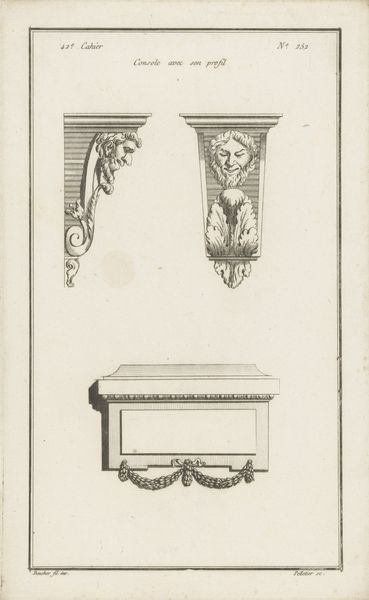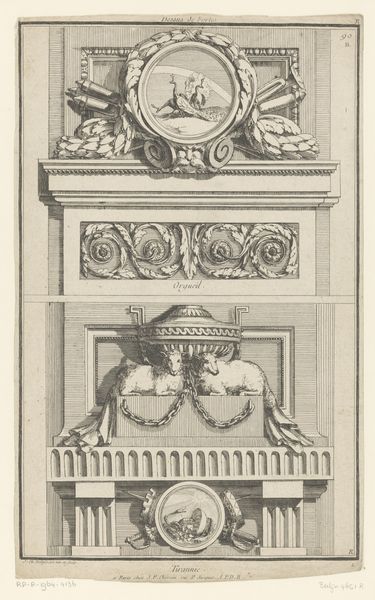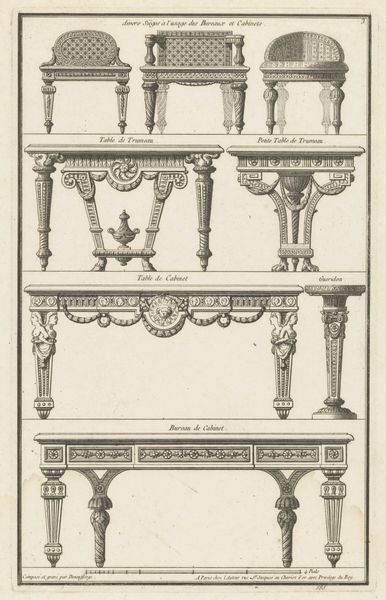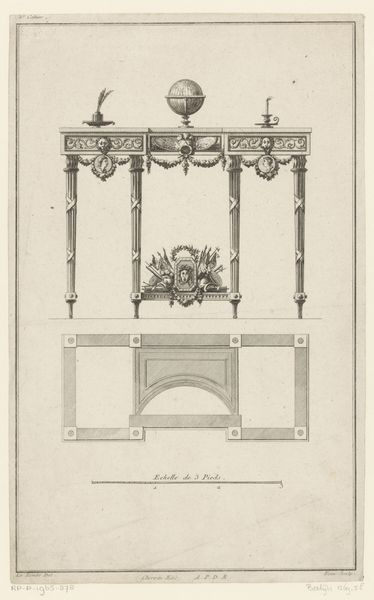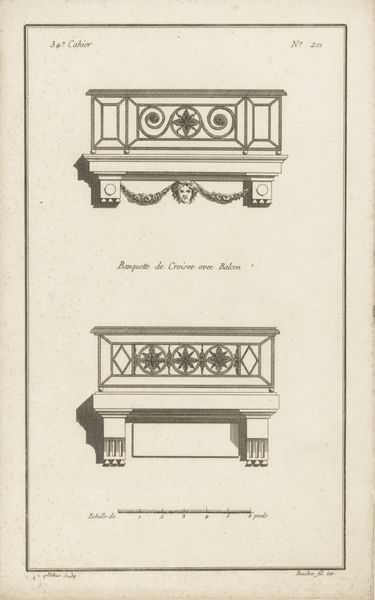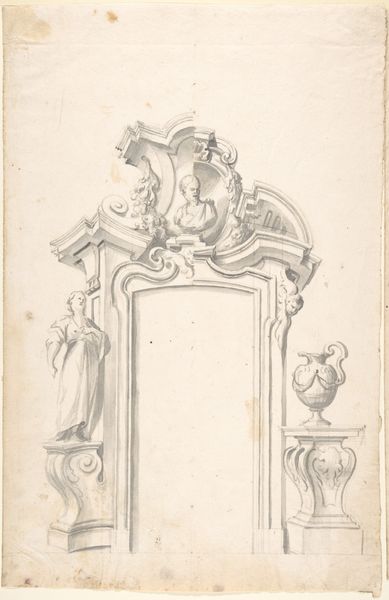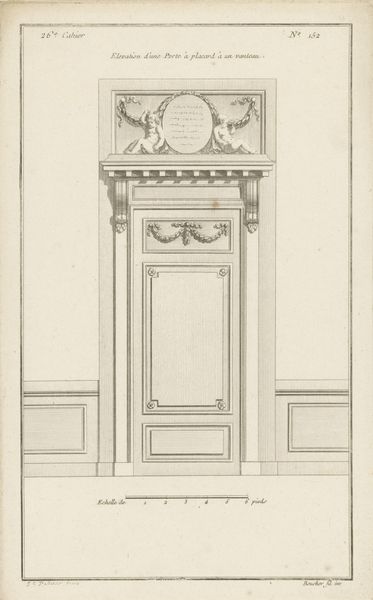
drawing, print, engraving
drawing
neoclacissism
form
geometric
line
decorative-art
engraving
Dimensions: height 330 mm, width 203 mm
Copyright: Rijks Museum: Open Domain
Editor: This engraving from the late 1700s by Jean Pelletier, called "Console met bladmotieven," features designs for decorative consoles. The stark lines and detailed botanical motifs give it an air of classical refinement. What sort of symbolism do you find embedded within these images? Curator: I see a deliberate revival of classical ideals rendered through carefully chosen symbols. Note how the acanthus leaves, for example, often represent enduring life and regeneration. Consider how these symbols resonated within the Neoclassical movement. It was all about conveying specific virtues or ideas. Do you see any references to ancient architectural forms? Editor: Well, the consoles themselves seem like stylized classical columns, or at least fragments of them, and then there is the geometric shape in the upper middle piece. What might that geometric object stand for in this context? Curator: The geometric elements, juxtaposed with the organic leaf patterns, suggests a balanced interplay between reason and nature. Geometry, often seen as a divine language, was essential to classical design principles, communicating harmony and order. Think about how psychological comfort might be created when combining these particular patterns? Editor: So the intention isn't just decorative, but also about evoking a sense of order and enduring values through visual language? Curator: Exactly. This print encapsulates how symbols from the past could be thoughtfully repurposed to shape cultural memory and aesthetic preferences in a new era. The blend of organic and geometric suggests stability. Editor: That really changes how I see it; it's not just a pretty design, but a symbolic representation of ideals. I’ll never look at a leaf the same way. Curator: And I think I understand a bit more about how prints could have disseminated knowledge. Thank you for sharing.
Comments
No comments
Be the first to comment and join the conversation on the ultimate creative platform.

